Abstract
The aim of this study is to theoretically and methodologically substantiate the role of digital educational resources in the formation of a design-oriented educational environment. Within the framework of the theoretical analysis of the methodological basis of the problem presented in 24 scientific sources, various interpretations of the category of "digital educational resources" are given. Among the most used digital educational resources in the practice of the university are: electronic educational products; presentation of paper publications and information materials; software products; software and information products. Digital educational resources should be widely used at different stages of the lesson, using a wide variety of technologies and teaching methods. Using the questionnaire method, it was possible to identify a positive trend in all indicators of satisfaction with the use of digital educational resources in the educational process of teaching practice-oriented disciplines. It should be noted that in the level of formation of theoretical knowledge among students has increased. The presence of theoretical knowledge significantly increases the motivation to master and develop practical skills and abilities. The use of digital educational resources, such as an interactive educational presentation, an interactive test, educational animation, interactive instructions, video, 3d models, increase the effectiveness of the learning process in the classroom in practice-oriented disciplines of an artistic orientation.
Keywords: Digital resources, digital educational resources, educational resources, educational environment, educational environment design
Introduction
Modern higher professional education focuses on the use of technologies and approaches to the formation of the personality and influence on the personality, with the help of which a balance is ensured between the social and individual needs of the future specialist. In the context of modernization of approaches to the organization of higher education, in the context of an epidemiological crisis, the use of digital resources and their role in the formation of a design-oriented educational environment of an educational institution is of great importance. Earlier, we have already considered a design-oriented educational environment as one of the resources for high-quality training in higher education (Astashova et al., 2017; Serkova et al., 2019).
At the same time, modern socio-economic conditions and information and communication technologies put forward new requirements for a future specialist. In this regard, there is a need to develop innovative types and types of educational methods, the implementation of which requires the use of modern computer technologies in the learning process.
Today, the already familiar abbreviations of EER and DER are often found - electronic educational resources and digital educational technologies, digitalization, digital economy.
EER are the most modern and effective when used in the educational process of the university. They are often referred to as digital educational resources (DER), but this is only the part that covers the processing and recording of information. Modern computers use digital methods for recording, storing and reproducing various information. For the full-fledged conduct of classes in a particular discipline, first of all, a theoretical base is needed. The carriers of theoretical information are electronic manuals.
Today, electronic teaching aids and resources are usually understood as information products and program-methodical training complexes that help the student in independent study of the course or discipline, with the leadership of the teacher.
Experience shows that both the full implementation of digital educational resources and their integration into the educational process allows to concisely supplement and combine traditional teaching methods with new ones, which allows you to objectively assess the quality of subject perception, ensure the construction of a trajectory for the development of the student's individual abilities and, as a result making your own discoveries.
Problem Statement
At the moment, during the period of global changes associated with the epidemiological situation in the country and the modernization of the education system, taking into account the digitalization of the economy, education is actively looking for new, more advanced methods of teaching professionally oriented disciplines that require teachers to widely use the principle of visibility.
The problem of developing and using digital educational resources in the process of teaching students of higher professional education in the classroom of professionally oriented disciplines of future teachers of arts and crafts and design is relevant and requires theoretical justification and practical development.
The use of digital educational resources can have the following options for organizing in the classroom in professionally oriented disciplines, such as drawing, painting, composition, interior design, landscape design, etc:
- using multimedia courses on CD-ROM,
- using elements of distance learning,
- using remote access databases,
- using virtual excursions to museums and using information resources of museums,
- using an on-line demonstration master class.
The main forms of using digital educational resources in the classroom of professionally oriented disciplines can be:
- using a personal computer.
- Using a personal computer and a projector.
As shown by the experience of practical activity and the psychological and pedagogical experiment carried out at the Faculty of Technology and Design of the Bryansk State University named after Academician I.G. Petrovsky, digital educational resources allow:
- organize a variety of activities for students to independently extract and present new information at lectures, seminars and laboratory-practical classes,
- use the full range of possibilities of modern information and telecommunication technologies in the process of performing various types of educational activities, including such as registration, collection, storage, information processing, interactive dialogue, modelling objects, phenomena, processes, the functioning of laboratories (virtual, with remote access to real equipment), etc., during the educational process;
- diversify the educational process and use information due to the possibilities of using multimedia technologies, virtual reality, hypertext and hypermedia systems,
- objectively diagnose and evaluate the intellectual capabilities of trainees, as well as the level of their knowledge, abilities, skills, the level of preparation for a specific occupation,
- measure the level of mastering professional competencies in accordance with the requirements of the federal state educational standard,
- manage the learning activities of trainees in accordance with the individual capabilities of a particular student, the level of his knowledge, abilities, skills, the peculiarities of his motivation and taking into account the methods and means of teaching used,
- create conditions for the implementation of individual independent learning activities of students,
- to form the skills of self-study, self-development, self-improvement, self-education, self-realization.
The functions of digital educational resources in the classroom of professionally oriented disciplines in the process of teaching future teachers of arts and crafts and design are:
- Assistance in the preparation and conduct of classes, as well as assistance to the student in the preparation of homework.
- Assistance in assembling and modelling lessons from separate digital objects in the presence of a large amount of additional and reference information - to deepen knowledge about the subject.
- Help in finding information in a set of digital educational resources.
- Assistance in conducting independent work.
- Assisting in testing students.
- Assisting in the preparation of lecture notes related to digital objects.
- Exchange of professional results between teachers.
- Assisting the trainee in preparation for seminars and practical classes.
- Conducting self-assessment of trainees' results.
In the process of developing digital educational resources, the following requirements must be taken into account:
- Compliance of the digital educational resource with the content of the academic course working program and the subject of the lesson.
- Orientation of the digital educational resource to modern technologies and teaching methods.
- Ensuring the possibility of individualization and differentiation of student learning.
- Orientation of the digital educational resource to the organization of various types of cooperation in learning.
- The ability to ensure independent creative work of students.
- Ensuring the implementation of the scientific principle, principle of availability and reliability of educational material.
Taking these provisions into account, a scientific and pedagogical research was carried out.
Research Questions
In the process of conducting the experiment, at each of the occupationally oriented disciplines, the developed digital educational resources were used, such as: interactive educational presentation, interactive test, educational animation, interactive instruction, video, 3d models.
Work with the listed resources was organized both in frontal and in individual form.
As an example, consider the use of digital educational resources in the process of teaching bachelors in the discipline "Artistic woodworking", which was developed for the direction of training bachelor's degree 44.03.04 Professional training (by industry) focus (profile) Arts and crafts and design and belongs to the module "Fundamentals and modern trends in arts and crafts". The main goal of the discipline is to introduce students to the heritage of artistic woodworking, to develop interest in traditional artistic craft.
In arts and crafts, it is important to master the traditional techniques of artistic woodworking. This skill develops the creative abilities of future teachers of vocational training, fosters attention to the surrounding subject environment, love for arts and crafts and folk art.
In the process of organizing activities to master the discipline "Artistic woodworking", the teacher designed lectures and practical classes so that they were problematic.
Themes of the lectures acquaint students with the traditions and modern experience of arts and crafts and crafts, technological and technical requirements, labour protection requirements, the concepts of scale and proportions when performing work, develop students' ideas about the synthesis of fine arts with decorative and applied art, about the logic of constructing an artistic form (Rogozin, 2021).
When conducting lectures, digital educational resources were used as much as possible. All classroom theoretical classes were accompanied by interactive educational presentations on the topics of lectures, videos. For some topics of the discipline, a developed virtual gallery was used with video fragments demonstrating one or another type and method of artistic woodworking.
The use of modern digital educational resources in theoretical studies has become a solid basis for performing practical tasks on artistic woodworking.
The leading role in mastering the discipline "Artistic woodworking" is assigned to practical classes, which also used modern digital educational resources, a variety of techniques that stimulate the creative activity of students. Practical tasks in the discipline "Artistic woodworking" are based on the consistent complication of the proposed exercises, which is designed to develop professional artistic thinking, creative potential and the implementation of projects in the process of decorating the simplest wood objects.
Practical tasks in the discipline "Artistic woodworking" are aimed at developing the skills to decorate wood products in traditional techniques. By completing practical tasks, students not only reproduce traditional techniques for decorating wood products, but also be able to creatively transform them, revealing the form-building and decorative qualities of wood products.
Completing practical tasks by students develops their creativity, imaginative thinking, helps develop your own author's vision. The process of teaching the discipline makes it possible to integrate the knowledge gained in the field of artistic woodworking and implement it into a specific design project.
In the process of working on practical tasks, students decorate wood products in various studied techniques, and the main requirement is that upon completion of work, all products should have an exhibition appearance.
All short-term practical tasks have clearly formulated tasks that contribute to the development of decoration skills wood products in traditional techniques. One of the mandatory requirements for students is to know and distinguish all the traditional techniques of artistic woodworking. All practical work was visualized, which helped students to visualize the educational task facing them.
To successfully master the most difficult topics (types of brush painting on wood, types of wood carving, etc.), the teacher used the elements of the master class when explaining the new material. Moreover, the master class could be held both in the format of a video conference and a video clip prepared in advance by the teacher.
The use of modern digital educational resources also helped to increase the activity of students when performing independent work. Particularly time-consuming tasks were carried out for independent training, in the implementation of which, the variability of the solution is provided, taking into account all the conditions presented. For the successful mastering of the discipline "Artistic woodworking" the student was asked to supplement the study of lecture topics with work with the recommended literature, Internet sources. When preparing reports with a presentation on the subjects proposed by the teacher or selected independently topics of the discipline, the opportunity to use an interactive glossary was provided.
To check the quality of mastering the material on the topics of the discipline, an interactive crossword puzzle and interactive tests of various levels of complexity were developed.
To increase the students' interest in completing all interactive tasks, according to the results of the course, all students who received a certain number of points could receive an interactive personal certificate on the implementation of the course outline "Artistic woodworking".
Purpose of the Study
The purpose of the psychological and pedagogical research was to identify the effectiveness of the use of digital educational resources in teaching professionally oriented disciplines at the institute of higher education.
Research Methods
One of the priority areas of quality education is the use of digital educational resources. These postulates are supported by the requirements of the Federal State Educational Standard for Higher Education (FSES HE), which sets out the requirements for educational results on the need to use information technologies, including digital educational resources.
For the first time, scientific controversy about the creation of a unified approach to the DER began in 2005, when the federal project "Informatization of the education system" was launched. The project was completed in 2008 and its most important result was the formation of a Unified collection of digital educational resources (Avdeeva, 2007; Ponachugin & Lapygin, 2019). It can be emphasized that the problem of designing and implementing the DER, including their analysis and expertise, was massively considered in the studies of such authors as S. Avdeeva, I. Belavina, E.A. Bondarenko, A.A. Zhurin, I.A. Milyutina, P.Ya. Galperina, A.K. Gromtseva, N.A. Menchinskaya (Bukharkina et al., 2008; Definition of the DER, 2019; Gazizova et al., 2018; Grigoriev et al., 2009; Guzhvenko, 2010; Huzyazyanova et al., 2019; Kodzhaspirova & Petrov, 2005; Nikonova, 2007; Osin, 2004, 2019; Pervezentseva, 2020; Sycheva et al., 2017; Vagramenko, 2011; Zanozin, 2007).
Apparently, it must be said that in the scientific literature the concept of "electronic educational resource" has a large number of different approaches. It is characterized by different opinions of the below mentioned scientists and is determined by the vagueness of terminology. For example, according to V.A. Krasilnikova, an educational resource is understood as a component of the educational environment, which has an educational function and is used by students and teachers (as cited in Zanozin, 2007). In addition, a number of studies highlight the problem of enhancing independent learning activities and individualization of learning using digital educational resources (Vagramenko, 2011).
In the works of Robert I.V., Averyanova T.A., Nikolaeva N.V. (as cited in Pervezentseva, 2020) it is noted that educational activities performed using digital educational resources are aimed at achieving educational and professional goals. The use of DER allows to implement modern forms and methods of organizing students' independent work (Pryakhina, 2006), to introduce the process of its planning and regulation (Prokubovskaya, 2002), as well as to activate cognitive activity (Pervezentseva, 2020) and to create educational and methodological support of an integral system of independent work of students on the basis of the complex application of the DER (Pervezentseva, 2020).
Based on the research of Alexandrova N.V., Bosova J.L., Gura V. V. (as cited in Pervezentseva, 2020) it can be said that the creation and use of DER must meet certain requirements to ensure the integrity of the educational process, as well as the unity of the pedagogical goals of personality development, content, forms, teaching methods.
In studies in the field of complex application of the CRC tools in teaching (Gorneva, 2020) the need to develop methodological support for learning activities is highlighted.
Possibilities of software environments (Web Tutor, REDCLASS Pro / Learning, Competent. INSTRUCTOR, Moodle, Prometheus, etc.). allow to carry out educational activities in real time, which is confirmed by studies on the methods of their use in the educational process (Belozubov A.V., Gaevskaya E.G., Gilmutdinov A.Kh., Dyachenko A. V., Ibragimov R. A., Nikolaev D.G. ., Tsivilsky I. V. etc. (Pervezentseva, 2020)] and in the process of teaching practical disciplines (Salankova et al., 2019; Serkova & Salankova, 2018).
At the same time, these studies do not sufficiently highlight the issues of implementing the capabilities of software environments for the formation of a design educational environment, including the formation of reports on the results of independent information educational activities for its assessment.
Thus, the problem of the study is due to the peculiarities of the development of theoretical and methodological approaches to the organization and stage-by-stage implementation of the use of DER as a means of forming a design-oriented educational environment".
Findings
At the ascertaining stage, testing was carried out with the students, in addition, a creative task was given, the implementation of which was assessed on a 10-point scale. The total of points was added up on the basis of the aggregate of points received on the test and the completed creative task.
Levels of knowledge, skills and abilities formation according to the results of testing and creative assignment:
- 1. High level of knowledge, skills and abilities formation (8-10 points). Excellent possession of theoretical knowledge, practical skills and abilities when performing a creative educational assignment. Excellent command of terms.
- 2. The average level of formation of knowledge, skills and abilities (6-7 points). Students at a good level have theoretical knowledge. Make minor mistakes when completing creative study assignments.
- 3. Low level of knowledge, skills and abilities formation (0-5 points). Students do not have theoretical knowledge, practical skills and knowledge of the subject.
The obtained diagnostic results were entered into tables and presented in diagrams 1-8.
Figure 1 shows the level of knowledge, skills, and abilities of the students of the experimental group at the ascertaining stage of the experiment.
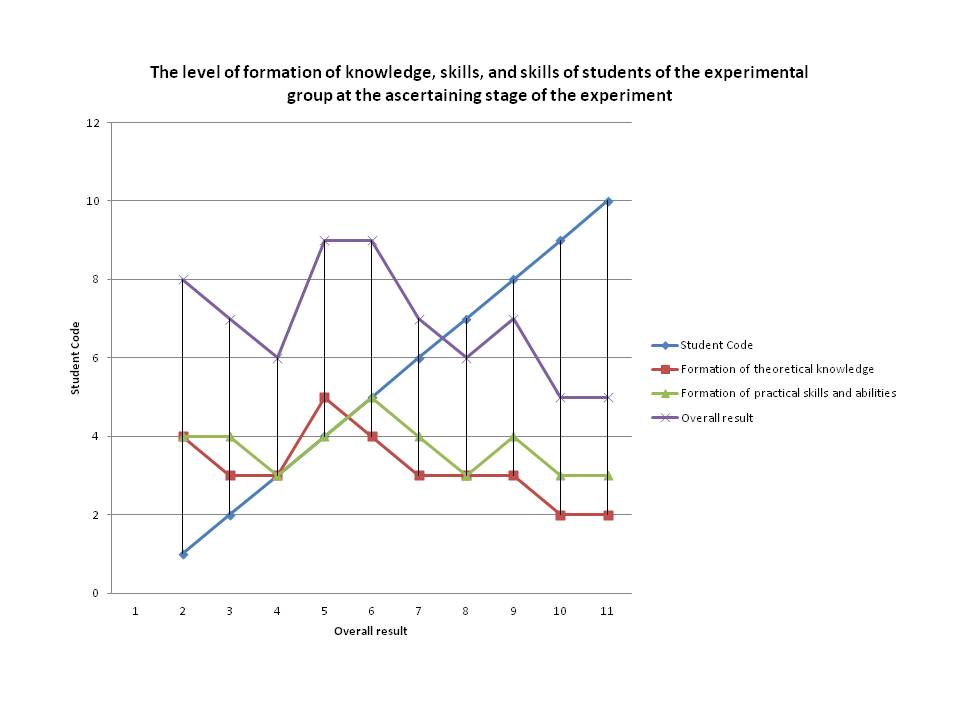
Figure 2 shows the percentage ratio of students according to the levels of knowledge, skills and abilities in the experimental group.
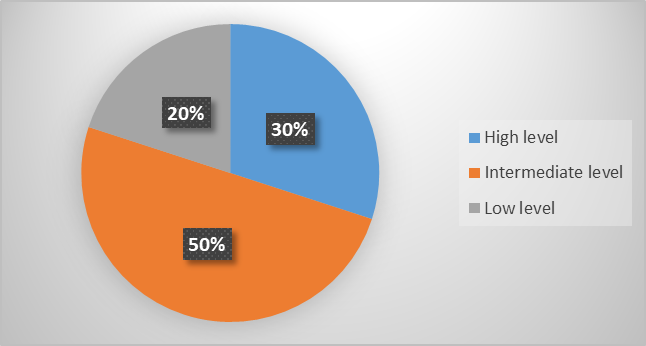
Figure 3 shows the level of formation of knowledge and skills of students of the control group at the ascertaining stage of the experiment.
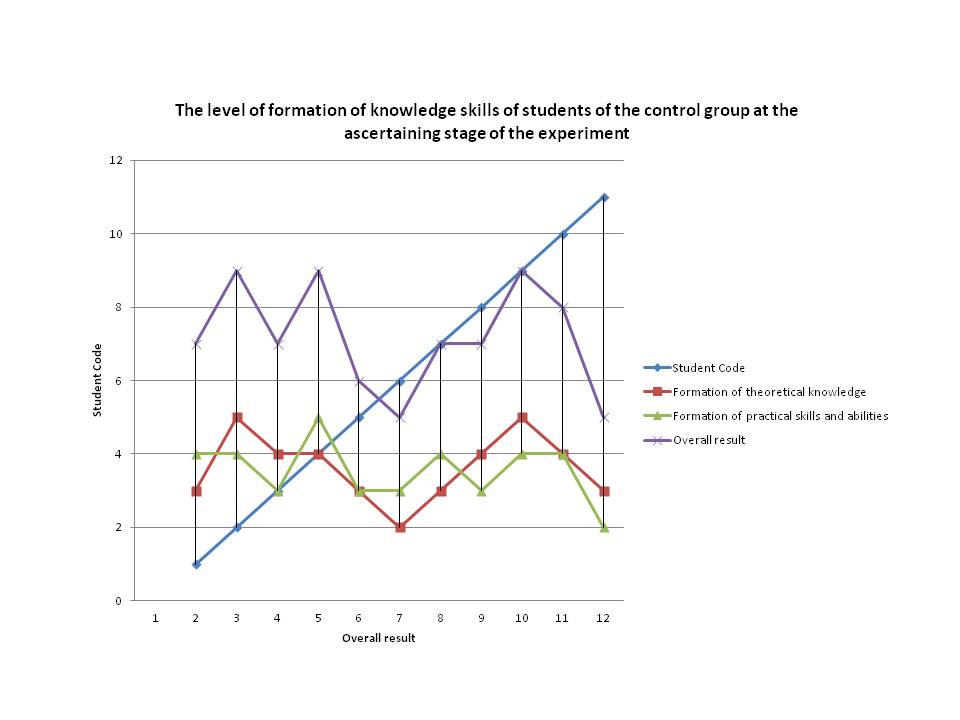
Figure 4 shows the percentage ratio of students by the levels of knowledge, skills and abilities in the control group.
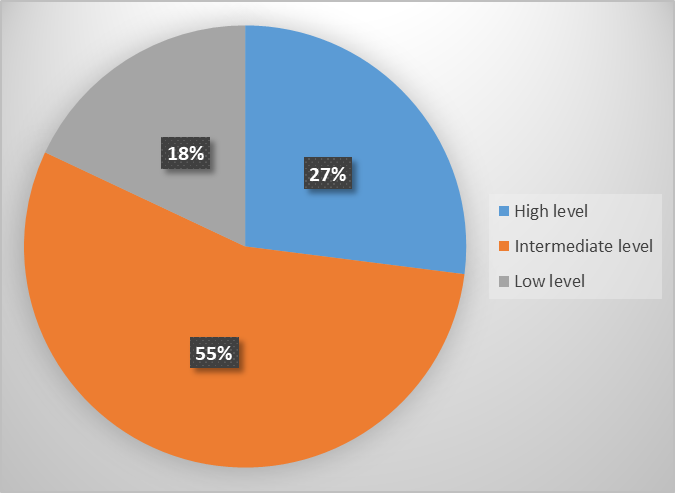
The diagnostic results showed that, in general, students of both groups are at an average level of knowledge, skills, and abilities in the discipline "Artistic woodworking", but there are students who are at a low level.
This indicator requires improvement of teaching methods and means.
To correct the shortcomings, it was decided to organize work with digital educational resources in the classroom for artistic woodworking.
At the control stage of the experimental work, a repeated diagnostics of the level of knowledge, skills and abilities in the discipline "Artistic woodworking" was carried out.
The retesting was carried out and the practical task completed by the students was analysed. The results are tabulated and presented in the diagram in Figures 5-8.
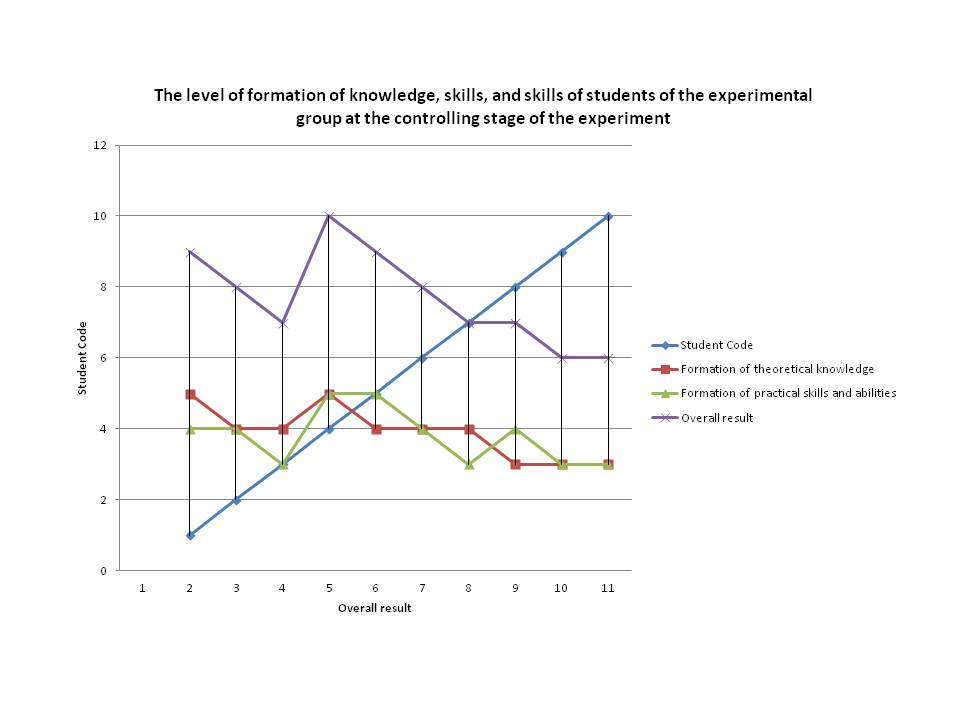
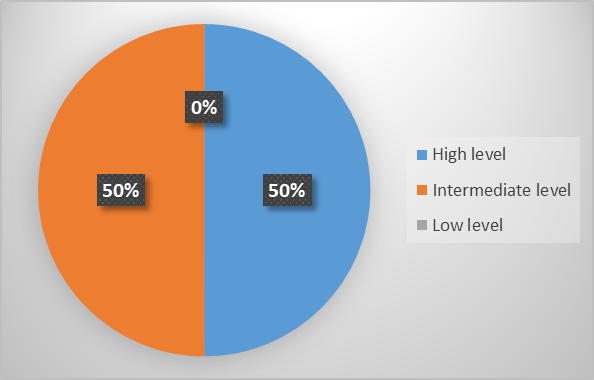
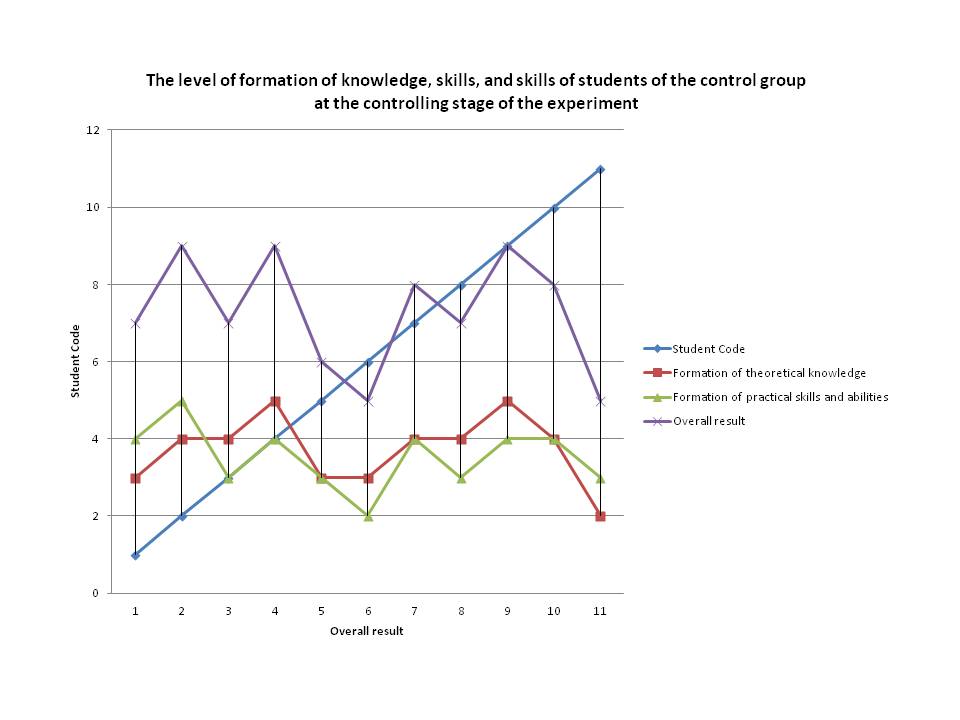
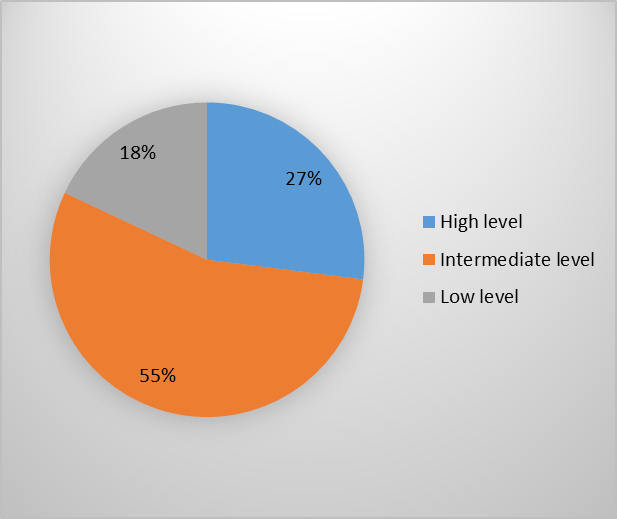
Conclusion
Thus, the research problem is due to the peculiarities of the development of theoretical and methodological approaches to the organization and stage-by-stage implementation of the use of DER as a means of forming a design educational environment. As the results showed, the use of digital educational resources had a positive effect on indicators in the experimental group. the formation of theoretical knowledge among students, the presence of which influenced the formation of practical skills and abilities. In the control group, the results did not change, since the formative stage of the experiment was not carried out in it.
All of the above allows us to conclude that the hypothesis of the study was confirmed. The use of digital educational resources, such as an interactive educational presentation, an interactive test, educational animation, interactive instruction, video, 3d models, increase the effectiveness of the learning process in the classroom of practice-oriented disciplines.
References
Astashova, N. A., Bondyreva, S. K., & Malkina, O. V. (2017). Strategicheskiye orientiry obrazovatelnoy interaktivnoy sredy v kachestve osnovy dlya razrabotki aksiosfery budushcheg ouchitelya [Strategic benchmarks the educational interactive environment as a basis for the development of the axiosphere of prospective teachers]. J. Fundament. Appl. Sci, 9(7S), 1392-1418.
Avdeeva, S. M. (2007). Teaching materials of a new generation in the ISO project. Narodnoe obrazovanie, 9, 187-194.
Bukharkina, M. Yu., Moiseeva, M. V., & Polat, E. S. (2008). New pedagogical and information technologies in the education system. Moscow.
Definition of the DER. (2019). Retrieved 05 January 2019 from: anton-frolow2010.narod.ru/word/3.doc
Gazizova, A. I., Siraeva, M. N., Trofimova, G. S., & SHishkina, R. G. (2018). Pedagogical factors of the humanitarization of the educational environment in a regional university: a collective monograph. Izhevsk.
Gorneva, E. A. (2020). Application of electronic educational resources in the professional training of future specialists. Retrieved 05 January 2019 from: https://cyberleninka.ru/article/n/primenenie-elektronnyh-obrazovatelnyh-resursov-v-professionalnoy-podgotovke-buduschih-spetsialistov
Grigoriev, S. G., Kuznetsov, A. A., & Grinshkun, V. V. (2009). Educational and electronic publications and resources. Moscow.
Guzhvenko, E. I. (2010). Coordinating model of the methodological system of teaching computer science and information technology. from: https://www.dissercat.com/content/koordiniruyushchaya-model-metodicheskoi-sistemy-obucheniya-informatike-i-informatsionnym-tek
Huzyazyanova, E. Z., Gilaeva, G. D., & Nuriakhmetova, M. I. (2019). On the issue of choosing software in support of the special course "Development of digital educational resources". Retrieved 05 January 2019 from: http://1c.ru/rus/partners/training/edu/theses/?y=2009&s=28&t=52405.01.2019.
Kodzhaspirova, G. M., & Petrov, K. V. (2005). Technical teaching aids and methods of their use. Moscow.
Nikonova, N. V. (2007). Principles of the formation of an integrated software for educational purposes based on the integration of traditional and innovative approaches. Informatics and Education, 1, 109-111.
Osin, A. V. (2019). Electronic educational educational modular multimedia systems. https://docplayer.ru/44978090-A-v-osin-eor-novogo-pokoleniya-otkrytye-obrazovatelnye-modulnye-multimedia-sistemy-vvedenie.html
Osin, A. V. (2004). Multimedia in education: the context of informatization. Moscow.
Pervezentseva, E. A. (2020). Development of a complex of electronic educational resources and its use for independent information educational activities. http://nauka-pedagogika.com/pedagogika-13-00-02/dissertaciya-razrabotka-kompleksa-elektronnyh-obrazovatelnyh-resursov-i-ego-ispolzovanie-dlya-samostoyatelnoy-informatsionnoy-uchebnoy
Ponachugin, A. V., & Lapygin, Yu. N. (2019). Digital educational resources of the university: design, analysis and expertise. Vestnik of Minin University, 7(2). https: //cyberleninka.ru/article/n/tsifrovye-obrazovatelnye-resursy-vuza-proektirovanie-analiz-i-ekspertiza
Prokubovskaya, A. O. (2002). Computer modelling as a means of developing independent cognitive activity of university students. Yekaterinburg.
Pryakhina, N. E. (2006). Opportunities of information technologies in organizing and improving students' independent work. Tyumen.
Rogozin, D. M. (2021). Ideas of university professors about the future of distance education. Internet journal "Questions of Internet Education". Retrieved 15 April 2021 from://vo.hse.ru/data/2021/03/16/1399049731/Rogozin.pdf
Salankova, S. E., Serkova, E. I., & Sidorova, L. V. (2019). The use of information and communication technologies in the process of teaching students to knit. In S. V. Kharitonchik (Ed.). Proceedings of the International Scientific and Practical Conference on Modern Technologies in Education. Vol. 1 (pp. 61-65). Belarusian National Technical University.
Serkova, E. I., & Salankova, S. E. (2018). Experience in the use of modern educational technologies in the course of training bachelors in the direction of vocational training ("DPI and design"). In V.B. Sanzharova, D.O. Antipina, & T.A. Anisimova (Eds.). Design and Artistic Creativity: Theory, Methodology and Practice. (pp. 60-64). FGBOU VO "SPbSUITD".
Serkova, E. I., Voronin, A. M., Salankova, S. Y., Bychkova, N. V., Klyuikov, V. V., & Savin, A. V. (2019). Design-oriented education environment as a means of improving the quality of undergraduate education in terms of the competency-based approach. Journal of Environmental Treatment Techniques, 7(4), 601-612.
Sycheva, N. V., Khasanova, N. A., & Aleinikova, A. O. (2017). Some aspects of the technology of creating a fund of assessment tools in the university in the context of the contextual approach in education. Rostov Scientific Journal, 6, 97-102.
Vagramenko, Ya. A. (2011). Computer science: educational aspect. Moscow.
Zanozin, D. A. (2007). Individualization of the formation of professional skills of future teachers in the process of using computer training programs. In Proceedings of the All-Russian interdisciplinary scientific conference on Technologies of individualization of education at a university, 79-83.
Copyright information

This work is licensed under a Creative Commons Attribution-NonCommercial-NoDerivatives 4.0 International License.
About this article
Publication Date
25 September 2021
Article Doi
eBook ISBN
978-1-80296-115-7
Publisher
European Publisher
Volume
116
Print ISBN (optional)
-
Edition Number
1st Edition
Pages
1-2895
Subjects
Economics, social trends, sustainability, modern society, behavioural sciences, education
Cite this article as:
Serkova, E. I., Bychkova, N. V., Reznikova, O. I., Kravchenko, A. G., Salankova, S. E., Volkov, V. V., & Klimovtsova, N. A. (2021). Digital Educational Resources As A Means Of Forming A Design-Oriented Educational Environment. In I. V. Kovalev, A. A. Voroshilova, & A. S. Budagov (Eds.), Economic and Social Trends for Sustainability of Modern Society (ICEST-II 2021), vol 116. European Proceedings of Social and Behavioural Sciences (pp. 1412-1425). European Publisher. https://doi.org/10.15405/epsbs.2021.09.02.159

